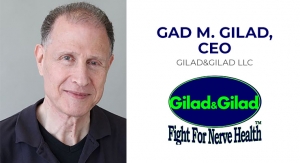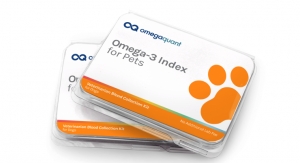L. Phillips Brown DVM, Sr. VP Marketing and Regulatory Affairs Nutri-Vet Animal Health Care Products03.01.12
You would think reading headlines about increasing national debt ceilings, governmental defaults, a European debt crisis and a persistent high unemployment rate might stop pet owners from spending. Not so.
Although the growth rate of the pet industry moderated during the recession, most pet owners value the comfort and health of their dogs and cats more than ever and are willing to buy more than just the basics. High-end pet foods, such as organic, grain-free, refrigerated and raw foods are gaining more shelf space in outlets that are increasingly catering to the “pet parent.” Doggie daycare centers that charge $20-35 per eight-hour day and boarding facilities where dogs can sleep in a bedroom with a person are extremely busy. Celebrity endorsed foods and accessories as well as high end “doggie boutiques” have become commonplace.
It really has been a phenomenal decade for the pet industry. Packaged Facts, a Rockville, MD-based market research firm, reported that pet retail sales reached $55 billion in 2010 and were expected to hit nearly $60 billion by the end of 2011—a far cry from 2001 total pet sales of $28.5 billion. U.S. retail sales of pet food totaled $18.4 billion in 2010, an increase of 2.8% over 2009 sales, and were projected to reach $19 billion in 2011.
The American Pet Products Association (APPA), Greenwich, CT, reported that Americans spent more than $3.5 billion on pet services, including grooming, daycare and high-end boarding kennels, nearly double what they spent less than 10 years ago. According to Nutrition Business Journal (NBJ), Boulder, CO, natural and organic pet foods, pet supplements and other natural and organic pet supplies grew 5.2% in 2010 to reach $3.2 billion, with the animal supplement category alone adding $80 million in new sales dollars to reach $1.6 billion.
Packaged Facts reported the compound annual growth rate (CAGR) of U.S. retail sales of pet supplements and nutraceutical treats for dogs, cats and other small animals was 6.6% between 2006 and 2010 and projected to hit 7.4% during the 2010 to 2015 period. The market researcher also reported the percentage of dog and cat owners who purchased pet supplements and nutraceutical treats increased from 19% and 12%, respectively, in 2005 to 31% and 22% in 2010.
The top-selling supplement group continues to be joint heath, with a 4% growth rate and sales of $690 million, or 45% of total category sales, according to NBJ. The dental category grew almost 7% to reach $20 million as pet owners looked for ways to prevent one of the leading reasons for a visit to the veterinarian. Skin and coat supplements grew 8% and accounted for 10% of sales. A recent survey by Nestle Purina Petcare, St. Louis, MO, found that 40% of dog owners and 50% of cat owners expressed interest in purchasing veterinary medications, foods or supplements to address their pet’s gastrointestinal (GI) condition. Multivitamin sales continue to decline as condition-specific supplements evolve and pet food manufacturers improve their formulas with added functional ingredients.
Sales Drivers & Trends
Pets are living longer and subsequently developing age-related problems similar to their human guardians. People are taking clues from their own ways of staying healthier by eating better and taking supplements, which is particularly important as veterinary healthcare costs rise. The average household in the U.S. spent $655 on routine visits for dogs to the veterinarian last year, up 47% from a decade ago, according to the APPA. Expenditures for cats soared 73% over the same time frame, as parenting a cat became more “respectable.” For perspective, the U.S. Centers for Medicare and Medicaid Services reported that expenditures for humans increased almost 77% between 1999 and 2009.
However, the major driving force behind the growth of animal supplements is that pet owners view these products as natural ways to promote health and wellness, the main reason Packaged Facts’ March 2011 report, “Pet Food in the U.S., 9th edition,” concluded the outlook was “especially good” for pet supplements and holistic pet foods. Veterinarians have also come to view supplements as reasonable alternatives to animal drugs and are more willing to recommend them as adjuvant or even replacement therapy.
Mintel’s Global New Products Database reported that 72% of U.S. consumers consider pets as part of the family and want the best for their dogs and cats. It comes as no surprise that well formulated supplements with functional ingredients that target specific physiological—and psychological—needs of today’s pets are enticing to a whole population of pet parents committed to optimizing the quality of their animals’ lives.
The marketing of recognizable label claims and ingredients found in human diets, such as chicken fillets or fresh salmon, glucosamine, omega 3 fatty acids, probiotics and antioxidants attract shoppers who want to provide the “best” for their pets. The value of a pet product has come to reside not so much in its price and marketing positioning as the wholesomeness and health benefits it offers. In fact, 30% of all global pet food introductions in 2010 carried a “no additives/preservatives” label claim, while 17% were labeled “all-natural.” Pet owners have become more discriminating in their purchases, and the days of offering pet products that simply mirror what is available for humans, such as granola bars or oxygen-enhanced water for dogs, are numbered.
Education is still the key to selling dietary supplements and it behooves retailers to appreciate thoroughly the intended functionality of a particular product as well as its active ingredients to sort out which supplements are “therapeutic” and which ones are “treats.” This distinction is not as easy as it sounds because supplements are no longer just available in pill form; increasingly, functional ingredients are appearing in toppers, gravies, foods and snacks. Pet food companies market their diets as providing more than “nutritional adequacy” by adding functional ingredients that help maintain skin and coat condition, joint flexibility, digestive healthiness and immune strength.
Product Opportunities
Much like the human vitamin category, pet owners appreciate the importance of dietary supplements as a complement—not a replacement—to high quality natural or organic pet foods. Nearly 70% of dog owners are aware of vitamins and supplements specifically formulated for animals, yet this knowledge does not necessarily translate into purchase unless the pet parent has a reason to buy.
The main barrier to purchase is the belief that if the dog is healthy, then it doesn’t need a supplement. Or, if a particular ingredient is already in the pet’s food, then what additional benefits will standalone supplements offer? Too often, pet parents assume that “complete and balanced” pet foods address all animals’ physiological needs. This misconception presents a tremendous opportunity for add-on sales when retailers educate pet owners about the benefits of supplements in healthy animals as a proactive means to maintain vitality, prevent disease, slow down the aging process, promote immune, skin/coat and joint health and ease shedding, bad breath, anxiety and digestive upsets.
Increasingly, dietary supplement companies are offering ways to educate retailers and their customers through informational point-of-sales signage, simplified color-coded labels and on-label QR Codes that provide in-depth ingredient definitions, suitability of product use or before-and-after use videos. Websites have become more informational than simply a place to order items. Social media outlets, such as Facebook and Twitter, are proving to be effective promotional and information vehicles and go a long way to brand building.
As pet owners take a more holistic approach to their pet’s health, veterinary endorsements of supplements are growing and increasingly re-enforcing their importance in maintaining overall pet health. Many retailers now partner with nearby veterinary facilities to support clinicians’ recommendations and in turn provide the clinics with in-depth product information and samples.
E-commerce sales have been steadily gaining share for a decade, with companies like Amazon and 1-800-PetMeds constantly expanding their offerings of supplements. Wal-Mart, Costco and Dollar General offer a wide variety of pet nutritional products on their sites, as do traditional pet retailers such as Petco and PetSmart, which try to capture additional sales with discounts, special offers and free shipping on repeat orders. The increasing use of mobile wallets will also expand sales, although many brick and mortar retailers worry that “scan and scram” behavior will turn them into nothing more than showrooms for online retailers.
Smoothing Out Bumps in the Road
Top priorities for the industry include attracting first-time shoppers to the supplement section, raising overall category awareness and educating shoppers to understand how to become more proactive in maintaining pet wellness.
The “humanization” trend attracts health-conscious shoppers following human functional food and vitamin trends, yet only a small percentage of customers actually shop the supplement aisle. Growth will come from educating and attracting new customers with focused signage and labeling that emphasizes prevention and animal wellness.
Retailers are constantly challenged to connect products with shopper’s needs. Displays should be clean, readily catch the shopper’s eye and communicate a message that is easily understood. As the category matures, growth will come from stores that better merchandise and structure the category. Humanization has indeed helped the category grow and segment shoppers, but a clear message of use and function is essential for sustainable growth. Too often a basic understanding of how supplements can best be used for a particular pet’s need is lacking.
Another mandate is reducing vendors and managing the brand portfolio. Pet supplements—like human supplements—can be a confusing category to navigate. Shoppers may have a difficult time choosing because of the overabundance of products that address the same problem, confusing label claims and the lack of information about quality and functionality. Fortunately, reducing vendors and streamlining brands, rather than reducing the overall footprint of the category, is helping control this plethora of SKUs. Buyers recognize they can do more volume with less SKUs, more effective count sizes and innovative products, formulations and presentations. Managing brand portfolios with “good, better, best” helps minimize shopper confusion, and supporting key brands with in-store promotions encourages purchase. Traceability, consistency of formulations and quality control help validate buying decisions.
From a regulatory point of view, there is disparity among buyers with respect to how they see the market evolving. Some believe the FDA should become more involved in efficacy and label claims related to active ingredients, while others feel the industry will continue to regulate itself satisfactorily. Consumer concern about ingredient quality is evidenced by the fact that natural and holistic pet food sales reached $15 billion one year after the melamine recall and continue to show a 20% growth rate versus other categories that have almost flat lined.
Most industry observers agree the boom in pet product sales over the past 10 years has largely been driven by Baby Boomers who have watched their children leave the nest and re-focused their attention and discretionary spending on their pets. Unfortunately, this segment of consumers is not infinite. In fact, many experts warn that the largest segment of Baby Boomers (often defined as the generation born between 1946 and 1964) will soon begin to forgo pet ownership as they reach their later “golden years,” prompting a precipitous drop in pet ownership, and thus pet-related spending.
Typically, 70 is an age at which pet ownership becomes a less-attractive option for the average pet owner, who likely doesn’t want to be strapped with the responsibility of caring for a pet. Retailers need to attract younger and higher-income shoppers and deliver the message that prevention fosters vitality and longevity, but not lose focus on the “grandparent population,” a segment projected to hit 77.1 million by 2015.
As the diversity of pet ownership expands, some markets will require added investment and multicultural engagements to elevate pet ownership and drive pet spending. The Hispanic population accounted for more than half of the nation’s growth over the past decade, now representing 16% of the population overall. Beneful and Pedigree websites, for example, already offer some Spanish language capabilities. Non-whites and Hispanics accounted for 98% of the U.S. population growth in large metropolitan areas; 42% of the 100 largest metro areas lost white population and 22% are now “majority minority populations,” with blacks making up 12%, an increase of 12.3% since 2000.
Regulating Label Claims & Quality
Understanding pet supplement labels can be confusing to shoppers and retailers because the Dietary Supplement Health and Education Act (DSHEA) excluded animal supplements when it was written. Because of that misstep, FDA recognizes only two categories of animal products—animal food/feed and animal drugs—and officially requires that label verbiage reflect only these categories.
Ingredients that are approved for use in animal food and feed must be listed in the Association of Animal Feed Control Officials’ (AAFCO) handbook, which is published annually. Any ingredient that is not listed cannot (in theory) be used in pet foods or supplements. Each state AAFCO regulator is charged with reviewing supplement labels that fall in the animal food/feed category, such as multivitamins, prior to sale to ensure the products contain only approved ingredients and the labels make no false claims.
Some ingredients found in pet supplements and foods are “unapproved,” and although Generally Recognized As Safe (GRAS), do not appear in the AAFCO handbook. Such listing would involve extensive clinical trials, long approval times and big expense. Fortunately, under FDA’s policy of regulatory discretion, pet supplements containing unapproved ingredients can be sold as “remedies” as long there are no label claims of treating, curing or mitigating a disease.
However, only seven states have laws that require registration of supplements classified as animal remedies and review labels, and thus remedy labels may go unnoticed by all the other state regulators. Ingredient usage and label claims of functionality have become more rational as watchdogs like AAFCO, Center for Veterinary Medicine (CVM), Natural Animal Supplement Council (NASC) and manufacturers themselves have become more involved.
The NASC recently initiated a quality assurance program for raw material suppliers and contract manufacturers. This is particularly relevant in light of recent contamination issues with both pet foods and treats. Contract manufacturers that supply products to NASC member companies will undergo an in-depth NASC audit. Raw materials will be tested by independent testing laboratories specified and approved by the NASC using specific methodology that follows the current established recommendations of the United States Pharmacopeia (USP), Association of Official Analytical Chemists (AOAC) and other published testing methods.
A Wholesome Trend
There has been a fundamental change in how pet owners view their animals, with natural and organic pet foods and supplements finding a broader, more receptive audience. Health and wellness shoppers offer future business opportunities for retailers that understand the importance that proactive pet owners put on keeping their animals healthy for a long time. This is not a fad that will fade away—even in difficult economic times. Product knowledge combined with well-merchandised, attractive displays that don’t confuse consumers are effective in-store marketing tools.
The increased emphasis on “healthy” products by mass marketers, independent retailers and large pet specialty stores, coupled with new standards of quality implemented by the NASC, further boosts the credibility of animal supplements. As shoppers shift from issue-based problems to wellness awareness, growth will accelerate. Of course, the extent of future growth will depend on product innovation and how well retailers connect with their customers.
Dr. Brown holds a Doctorate Degree in Veterinary Medicine (DVM) from the University of California at Davis, a Master of Science Degree in Animal Science and Bachelor of Science Degree in Animal Physiology from the University of California. He is Vice President of Marketing of Nutri-Vet Animal Health Care Products (a division of Beefeaters Holding Company), veterinary consultant to Newman’s Own Organics, Past President of the Yavapai Humane Society Board of Directors and member of the American Veterinary Medical Association and National Animal Supplement Council. He writes and lectures frequently on the benefits of natural and organic foods and supplements for animals.
Consumers are increasingly looking for ways to eat healthier with foods that contain unique ingredients formulated to provide more than traditional nutrition. This same view is taken when purchasing pet foods.
Differentiation between brands often focuses on a number of “functional” ingredients intended to provide a positive health benefit, often without regard for the levels actually required for effect.
While this helps marketers tout the benefits of a certain formulation, pet owners need to remain skeptical. In fact, new legislation in Europe (Regulation 767/2009 of the European Parliament and of the Council on the market placement and use of feed) requires scientific substantiation for claiming that a particular ingredient provides a functional health benefit.
There are a number of functional ingredients that can be backed by substantiating evidence.
• Prebiotics are non-digestible food ingredients that stimulate the growth of beneficial bacteria that have the potential to improve host health, inhibiting the growth of pathogenic microorganisms. Fructooligosaccharides (FOS) act by stimulating the growth of Bifidobacterium species in the large intestine. Not much is known about the correct and effective dosage levels of prebiotics for dogs or cats, but preliminary evidence seems to indicate that very low levels (0.3% of a dog’s diet) are most effective and produce the least number of side effects (bloating, gas, etc.)
• Probiotics are friendly bacteria, such as Lactobacillus acidophilus, Bifidobacterium bifidum and Lactobacillus bulgaricus, that help to keep harmful bacteria from colonizing and creating digestive problems, and thus support the body in fighting illness and disease. If beneficial bacteria become depleted or the balance is disturbed, potentially harmful (pathogenic) bacteria can overgrow. Probiotics are live cultures unstable at temperatures over 75 degrees and thus need be applied to pet foods after cooking. Most veterinarians feel that standalone supplementation is more efficacious.
• Glucosamine and chondroitin are critical components of cartilage, but the body’s natural production diminishes with age. Many manufacturers formulate these chondroprotective nutrients into their pet foods to help stimulate cartilage metabolism and inhibit its degeneration as well as provide anti-inflammatory properties.
• Omega 3 fatty acids from fish oil or other marine sources contain high levels of eicosapentaenoic acid (EPA) and docosahexaenoic acid (DHA) capable of modifying inflammatory skin responses of healthy dogs. Pet foods supply ample omega 6 fatty acids, but not omega 3. Omega 9 fatty acids have no benefit to dogs or cats. Flaxseed oil contains alpha-linolenic acid (ALA), but its conversion by the body to EPA and DHA is slow and inefficient, and thus flaxseed oil does not appear to be as effective as fish oil in reducing inflammation.
• Antioxidants such as vitamins C and E, zinc and other trace elements help neutralize the effects of stress and environmental irritants. Although dogs—unlike humans—manufacture vitamin C, many veterinarians look at it as a “conditionally essential” nutrient helpful in times of stress. Pet owners like to see this vitamin in pet foods as well as vitamin E.
Although the growth rate of the pet industry moderated during the recession, most pet owners value the comfort and health of their dogs and cats more than ever and are willing to buy more than just the basics. High-end pet foods, such as organic, grain-free, refrigerated and raw foods are gaining more shelf space in outlets that are increasingly catering to the “pet parent.” Doggie daycare centers that charge $20-35 per eight-hour day and boarding facilities where dogs can sleep in a bedroom with a person are extremely busy. Celebrity endorsed foods and accessories as well as high end “doggie boutiques” have become commonplace.
It really has been a phenomenal decade for the pet industry. Packaged Facts, a Rockville, MD-based market research firm, reported that pet retail sales reached $55 billion in 2010 and were expected to hit nearly $60 billion by the end of 2011—a far cry from 2001 total pet sales of $28.5 billion. U.S. retail sales of pet food totaled $18.4 billion in 2010, an increase of 2.8% over 2009 sales, and were projected to reach $19 billion in 2011.
The American Pet Products Association (APPA), Greenwich, CT, reported that Americans spent more than $3.5 billion on pet services, including grooming, daycare and high-end boarding kennels, nearly double what they spent less than 10 years ago. According to Nutrition Business Journal (NBJ), Boulder, CO, natural and organic pet foods, pet supplements and other natural and organic pet supplies grew 5.2% in 2010 to reach $3.2 billion, with the animal supplement category alone adding $80 million in new sales dollars to reach $1.6 billion.
Packaged Facts reported the compound annual growth rate (CAGR) of U.S. retail sales of pet supplements and nutraceutical treats for dogs, cats and other small animals was 6.6% between 2006 and 2010 and projected to hit 7.4% during the 2010 to 2015 period. The market researcher also reported the percentage of dog and cat owners who purchased pet supplements and nutraceutical treats increased from 19% and 12%, respectively, in 2005 to 31% and 22% in 2010.
The top-selling supplement group continues to be joint heath, with a 4% growth rate and sales of $690 million, or 45% of total category sales, according to NBJ. The dental category grew almost 7% to reach $20 million as pet owners looked for ways to prevent one of the leading reasons for a visit to the veterinarian. Skin and coat supplements grew 8% and accounted for 10% of sales. A recent survey by Nestle Purina Petcare, St. Louis, MO, found that 40% of dog owners and 50% of cat owners expressed interest in purchasing veterinary medications, foods or supplements to address their pet’s gastrointestinal (GI) condition. Multivitamin sales continue to decline as condition-specific supplements evolve and pet food manufacturers improve their formulas with added functional ingredients.
Sales Drivers & Trends
Pets are living longer and subsequently developing age-related problems similar to their human guardians. People are taking clues from their own ways of staying healthier by eating better and taking supplements, which is particularly important as veterinary healthcare costs rise. The average household in the U.S. spent $655 on routine visits for dogs to the veterinarian last year, up 47% from a decade ago, according to the APPA. Expenditures for cats soared 73% over the same time frame, as parenting a cat became more “respectable.” For perspective, the U.S. Centers for Medicare and Medicaid Services reported that expenditures for humans increased almost 77% between 1999 and 2009.
However, the major driving force behind the growth of animal supplements is that pet owners view these products as natural ways to promote health and wellness, the main reason Packaged Facts’ March 2011 report, “Pet Food in the U.S., 9th edition,” concluded the outlook was “especially good” for pet supplements and holistic pet foods. Veterinarians have also come to view supplements as reasonable alternatives to animal drugs and are more willing to recommend them as adjuvant or even replacement therapy.
Mintel’s Global New Products Database reported that 72% of U.S. consumers consider pets as part of the family and want the best for their dogs and cats. It comes as no surprise that well formulated supplements with functional ingredients that target specific physiological—and psychological—needs of today’s pets are enticing to a whole population of pet parents committed to optimizing the quality of their animals’ lives.
The marketing of recognizable label claims and ingredients found in human diets, such as chicken fillets or fresh salmon, glucosamine, omega 3 fatty acids, probiotics and antioxidants attract shoppers who want to provide the “best” for their pets. The value of a pet product has come to reside not so much in its price and marketing positioning as the wholesomeness and health benefits it offers. In fact, 30% of all global pet food introductions in 2010 carried a “no additives/preservatives” label claim, while 17% were labeled “all-natural.” Pet owners have become more discriminating in their purchases, and the days of offering pet products that simply mirror what is available for humans, such as granola bars or oxygen-enhanced water for dogs, are numbered.
Education is still the key to selling dietary supplements and it behooves retailers to appreciate thoroughly the intended functionality of a particular product as well as its active ingredients to sort out which supplements are “therapeutic” and which ones are “treats.” This distinction is not as easy as it sounds because supplements are no longer just available in pill form; increasingly, functional ingredients are appearing in toppers, gravies, foods and snacks. Pet food companies market their diets as providing more than “nutritional adequacy” by adding functional ingredients that help maintain skin and coat condition, joint flexibility, digestive healthiness and immune strength.
Product Opportunities
Much like the human vitamin category, pet owners appreciate the importance of dietary supplements as a complement—not a replacement—to high quality natural or organic pet foods. Nearly 70% of dog owners are aware of vitamins and supplements specifically formulated for animals, yet this knowledge does not necessarily translate into purchase unless the pet parent has a reason to buy.
The main barrier to purchase is the belief that if the dog is healthy, then it doesn’t need a supplement. Or, if a particular ingredient is already in the pet’s food, then what additional benefits will standalone supplements offer? Too often, pet parents assume that “complete and balanced” pet foods address all animals’ physiological needs. This misconception presents a tremendous opportunity for add-on sales when retailers educate pet owners about the benefits of supplements in healthy animals as a proactive means to maintain vitality, prevent disease, slow down the aging process, promote immune, skin/coat and joint health and ease shedding, bad breath, anxiety and digestive upsets.
Increasingly, dietary supplement companies are offering ways to educate retailers and their customers through informational point-of-sales signage, simplified color-coded labels and on-label QR Codes that provide in-depth ingredient definitions, suitability of product use or before-and-after use videos. Websites have become more informational than simply a place to order items. Social media outlets, such as Facebook and Twitter, are proving to be effective promotional and information vehicles and go a long way to brand building.
As pet owners take a more holistic approach to their pet’s health, veterinary endorsements of supplements are growing and increasingly re-enforcing their importance in maintaining overall pet health. Many retailers now partner with nearby veterinary facilities to support clinicians’ recommendations and in turn provide the clinics with in-depth product information and samples.
E-commerce sales have been steadily gaining share for a decade, with companies like Amazon and 1-800-PetMeds constantly expanding their offerings of supplements. Wal-Mart, Costco and Dollar General offer a wide variety of pet nutritional products on their sites, as do traditional pet retailers such as Petco and PetSmart, which try to capture additional sales with discounts, special offers and free shipping on repeat orders. The increasing use of mobile wallets will also expand sales, although many brick and mortar retailers worry that “scan and scram” behavior will turn them into nothing more than showrooms for online retailers.
Smoothing Out Bumps in the Road
Top priorities for the industry include attracting first-time shoppers to the supplement section, raising overall category awareness and educating shoppers to understand how to become more proactive in maintaining pet wellness.
The “humanization” trend attracts health-conscious shoppers following human functional food and vitamin trends, yet only a small percentage of customers actually shop the supplement aisle. Growth will come from educating and attracting new customers with focused signage and labeling that emphasizes prevention and animal wellness.
Retailers are constantly challenged to connect products with shopper’s needs. Displays should be clean, readily catch the shopper’s eye and communicate a message that is easily understood. As the category matures, growth will come from stores that better merchandise and structure the category. Humanization has indeed helped the category grow and segment shoppers, but a clear message of use and function is essential for sustainable growth. Too often a basic understanding of how supplements can best be used for a particular pet’s need is lacking.
Another mandate is reducing vendors and managing the brand portfolio. Pet supplements—like human supplements—can be a confusing category to navigate. Shoppers may have a difficult time choosing because of the overabundance of products that address the same problem, confusing label claims and the lack of information about quality and functionality. Fortunately, reducing vendors and streamlining brands, rather than reducing the overall footprint of the category, is helping control this plethora of SKUs. Buyers recognize they can do more volume with less SKUs, more effective count sizes and innovative products, formulations and presentations. Managing brand portfolios with “good, better, best” helps minimize shopper confusion, and supporting key brands with in-store promotions encourages purchase. Traceability, consistency of formulations and quality control help validate buying decisions.
From a regulatory point of view, there is disparity among buyers with respect to how they see the market evolving. Some believe the FDA should become more involved in efficacy and label claims related to active ingredients, while others feel the industry will continue to regulate itself satisfactorily. Consumer concern about ingredient quality is evidenced by the fact that natural and holistic pet food sales reached $15 billion one year after the melamine recall and continue to show a 20% growth rate versus other categories that have almost flat lined.
Most industry observers agree the boom in pet product sales over the past 10 years has largely been driven by Baby Boomers who have watched their children leave the nest and re-focused their attention and discretionary spending on their pets. Unfortunately, this segment of consumers is not infinite. In fact, many experts warn that the largest segment of Baby Boomers (often defined as the generation born between 1946 and 1964) will soon begin to forgo pet ownership as they reach their later “golden years,” prompting a precipitous drop in pet ownership, and thus pet-related spending.
Typically, 70 is an age at which pet ownership becomes a less-attractive option for the average pet owner, who likely doesn’t want to be strapped with the responsibility of caring for a pet. Retailers need to attract younger and higher-income shoppers and deliver the message that prevention fosters vitality and longevity, but not lose focus on the “grandparent population,” a segment projected to hit 77.1 million by 2015.
As the diversity of pet ownership expands, some markets will require added investment and multicultural engagements to elevate pet ownership and drive pet spending. The Hispanic population accounted for more than half of the nation’s growth over the past decade, now representing 16% of the population overall. Beneful and Pedigree websites, for example, already offer some Spanish language capabilities. Non-whites and Hispanics accounted for 98% of the U.S. population growth in large metropolitan areas; 42% of the 100 largest metro areas lost white population and 22% are now “majority minority populations,” with blacks making up 12%, an increase of 12.3% since 2000.
Regulating Label Claims & Quality
Understanding pet supplement labels can be confusing to shoppers and retailers because the Dietary Supplement Health and Education Act (DSHEA) excluded animal supplements when it was written. Because of that misstep, FDA recognizes only two categories of animal products—animal food/feed and animal drugs—and officially requires that label verbiage reflect only these categories.
Ingredients that are approved for use in animal food and feed must be listed in the Association of Animal Feed Control Officials’ (AAFCO) handbook, which is published annually. Any ingredient that is not listed cannot (in theory) be used in pet foods or supplements. Each state AAFCO regulator is charged with reviewing supplement labels that fall in the animal food/feed category, such as multivitamins, prior to sale to ensure the products contain only approved ingredients and the labels make no false claims.
Some ingredients found in pet supplements and foods are “unapproved,” and although Generally Recognized As Safe (GRAS), do not appear in the AAFCO handbook. Such listing would involve extensive clinical trials, long approval times and big expense. Fortunately, under FDA’s policy of regulatory discretion, pet supplements containing unapproved ingredients can be sold as “remedies” as long there are no label claims of treating, curing or mitigating a disease.
However, only seven states have laws that require registration of supplements classified as animal remedies and review labels, and thus remedy labels may go unnoticed by all the other state regulators. Ingredient usage and label claims of functionality have become more rational as watchdogs like AAFCO, Center for Veterinary Medicine (CVM), Natural Animal Supplement Council (NASC) and manufacturers themselves have become more involved.
The NASC recently initiated a quality assurance program for raw material suppliers and contract manufacturers. This is particularly relevant in light of recent contamination issues with both pet foods and treats. Contract manufacturers that supply products to NASC member companies will undergo an in-depth NASC audit. Raw materials will be tested by independent testing laboratories specified and approved by the NASC using specific methodology that follows the current established recommendations of the United States Pharmacopeia (USP), Association of Official Analytical Chemists (AOAC) and other published testing methods.
A Wholesome Trend
There has been a fundamental change in how pet owners view their animals, with natural and organic pet foods and supplements finding a broader, more receptive audience. Health and wellness shoppers offer future business opportunities for retailers that understand the importance that proactive pet owners put on keeping their animals healthy for a long time. This is not a fad that will fade away—even in difficult economic times. Product knowledge combined with well-merchandised, attractive displays that don’t confuse consumers are effective in-store marketing tools.
The increased emphasis on “healthy” products by mass marketers, independent retailers and large pet specialty stores, coupled with new standards of quality implemented by the NASC, further boosts the credibility of animal supplements. As shoppers shift from issue-based problems to wellness awareness, growth will accelerate. Of course, the extent of future growth will depend on product innovation and how well retailers connect with their customers.
Dr. Brown holds a Doctorate Degree in Veterinary Medicine (DVM) from the University of California at Davis, a Master of Science Degree in Animal Science and Bachelor of Science Degree in Animal Physiology from the University of California. He is Vice President of Marketing of Nutri-Vet Animal Health Care Products (a division of Beefeaters Holding Company), veterinary consultant to Newman’s Own Organics, Past President of the Yavapai Humane Society Board of Directors and member of the American Veterinary Medical Association and National Animal Supplement Council. He writes and lectures frequently on the benefits of natural and organic foods and supplements for animals.
Consumers are increasingly looking for ways to eat healthier with foods that contain unique ingredients formulated to provide more than traditional nutrition. This same view is taken when purchasing pet foods.
Differentiation between brands often focuses on a number of “functional” ingredients intended to provide a positive health benefit, often without regard for the levels actually required for effect.
While this helps marketers tout the benefits of a certain formulation, pet owners need to remain skeptical. In fact, new legislation in Europe (Regulation 767/2009 of the European Parliament and of the Council on the market placement and use of feed) requires scientific substantiation for claiming that a particular ingredient provides a functional health benefit.
There are a number of functional ingredients that can be backed by substantiating evidence.
• Prebiotics are non-digestible food ingredients that stimulate the growth of beneficial bacteria that have the potential to improve host health, inhibiting the growth of pathogenic microorganisms. Fructooligosaccharides (FOS) act by stimulating the growth of Bifidobacterium species in the large intestine. Not much is known about the correct and effective dosage levels of prebiotics for dogs or cats, but preliminary evidence seems to indicate that very low levels (0.3% of a dog’s diet) are most effective and produce the least number of side effects (bloating, gas, etc.)
• Probiotics are friendly bacteria, such as Lactobacillus acidophilus, Bifidobacterium bifidum and Lactobacillus bulgaricus, that help to keep harmful bacteria from colonizing and creating digestive problems, and thus support the body in fighting illness and disease. If beneficial bacteria become depleted or the balance is disturbed, potentially harmful (pathogenic) bacteria can overgrow. Probiotics are live cultures unstable at temperatures over 75 degrees and thus need be applied to pet foods after cooking. Most veterinarians feel that standalone supplementation is more efficacious.
• Glucosamine and chondroitin are critical components of cartilage, but the body’s natural production diminishes with age. Many manufacturers formulate these chondroprotective nutrients into their pet foods to help stimulate cartilage metabolism and inhibit its degeneration as well as provide anti-inflammatory properties.
• Omega 3 fatty acids from fish oil or other marine sources contain high levels of eicosapentaenoic acid (EPA) and docosahexaenoic acid (DHA) capable of modifying inflammatory skin responses of healthy dogs. Pet foods supply ample omega 6 fatty acids, but not omega 3. Omega 9 fatty acids have no benefit to dogs or cats. Flaxseed oil contains alpha-linolenic acid (ALA), but its conversion by the body to EPA and DHA is slow and inefficient, and thus flaxseed oil does not appear to be as effective as fish oil in reducing inflammation.
• Antioxidants such as vitamins C and E, zinc and other trace elements help neutralize the effects of stress and environmental irritants. Although dogs—unlike humans—manufacture vitamin C, many veterinarians look at it as a “conditionally essential” nutrient helpful in times of stress. Pet owners like to see this vitamin in pet foods as well as vitamin E.



























